AN EXPERIMENTAL TRAIN TRIP TO WASHINGTON DC
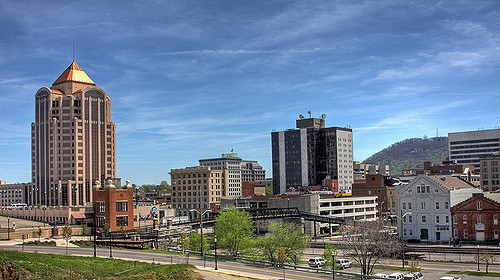
Roanoke was all a-flutter at the glorious prospect of the return of passenger rail service to The Star City, which started on October 31st, 2016. Personally I think Halloween was a very appropriate date, based on a trip which we took as a "test run" for local passenger rail. Because the service hadn't yet started out of Roanoke we left from Lynchburg, a mere 2-1/2 hours from Blacksburg.
The arguments for passenger rail travel in the US are based largely on myths, romaticism, and the European model; the first two arguments are simple fantasy and the last is wholly inapplicable to America. Nevertheless, the fanatics have compelled the city, the state, and the national government to spend millions on building a terminal that will I'm sure be very nice but will be out of use within a decade of the commencement of train service.
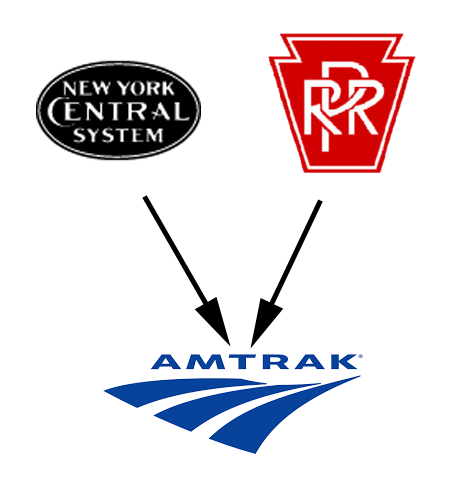 I have some experience in long-distance train travel (more than most people) going back to the mid-1960's, before Amtrak existed; and continuing into the early to mid 70's, after Amtrak was formed from the consolidation of previously existing railroads' passenger lines. Passenger rail has always been a money loser. The "contributing" railroads brought into the Amtrak system were 20-odd declining companies who were delighted when the government not only offered to take the money-losing parts of their operations off their hands but also to pay them for the privilege of giving up something they didn't want anyway.
I have some experience in long-distance train travel (more than most people) going back to the mid-1960's, before Amtrak existed; and continuing into the early to mid 70's, after Amtrak was formed from the consolidation of previously existing railroads' passenger lines. Passenger rail has always been a money loser. The "contributing" railroads brought into the Amtrak system were 20-odd declining companies who were delighted when the government not only offered to take the money-losing parts of their operations off their hands but also to pay them for the privilege of giving up something they didn't want anyway.
The only reason there had ever been "private" passenger service at all was because the government had mandated in the 19th Century that it be offered as a condition of providing subsidies to railroads. None of the railroads of the day would have offered passenger service otherwise. In 1883 a reporter asked the railroad magnate W.H. Vanderbilt, "Do your limited express trains pay or do you run them for the accommodation of the public?" The reply he received was:
"Accommodation of the public? The public be damned! We run them because we have to. They do not pay. We have tried again and again to get the different roads to give them up; but they will run them and, of course, as long as they run them we must do the same....Railroads are not run for the public benefit, but to pay. Incidentally, we may benefit humanity, but the aim is to earn a dividend."
This is, of course, the current attitude of airlines. But I digress.
By 1971 Amtrak had been created by a series of legislative actions that required the government to commence steadily pouring tax money down a rathole, to the tune of $1.4 billion per year, which has continued ever since. The public was always given a promise that someday—someday soon, for sure, you betcha—Amtrak would "turn the corner" and start making a profit, or at least break even. That was a lie and the government knew it was a lie, yet they peddled it to the public and the public was dumb enough to believe it. Nearly five decades later, after numerous changes of administration and CEO's, nothing has changed except that the amounts lost every year on Amtrak operations continue to increase.
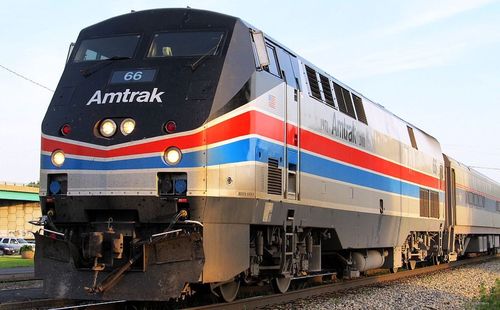 Throughout the 1970's I was riding almost weekly between Washington DC and NY City using the Amtrak service between Union Station and Penn Station. I did this for my entire time at Andrews AFB (1971-74) and in the first years of my marriage when I lived in DC until we left in 1982. In those halcyon days of the early '70's it cost me $8 one way (that's not a typo) if I went in uniform; and all of fifty cents to park my car at the Capital Beltway station for the entire weekend. The station was right outside the gate at Andrews, and upon arrival in New York I could take the NY City subway to my parents' home in the Bronx. It made a lot of sense to someone who was then earning the miserable pittance the Air Force was paying an E-3. The train I usually caught had an actual dining car with real food, too.
Throughout the 1970's I was riding almost weekly between Washington DC and NY City using the Amtrak service between Union Station and Penn Station. I did this for my entire time at Andrews AFB (1971-74) and in the first years of my marriage when I lived in DC until we left in 1982. In those halcyon days of the early '70's it cost me $8 one way (that's not a typo) if I went in uniform; and all of fifty cents to park my car at the Capital Beltway station for the entire weekend. The station was right outside the gate at Andrews, and upon arrival in New York I could take the NY City subway to my parents' home in the Bronx. It made a lot of sense to someone who was then earning the miserable pittance the Air Force was paying an E-3. The train I usually caught had an actual dining car with real food, too.
For some years now it's been technically possible to go to DC and even NY or Boston by rail from Blacksburg, but first you have to go to Lynchburg, which is the closest Amtrak stop. Lynchburg is at least two hours from here whether you drive or take a bus. From Lynchburg, once you get on the train, it's a little over another 4 hours to DC. But given the giddy prospect of being able to go directly from Roanoke being heralded in the local press as if it were the Second Coming, my wife and I decided on an experimental trip to see how things would work. We signed on with a local tour company that was promising a delightful overnight stay in DC, complete with sightseeing at monuments, etc.
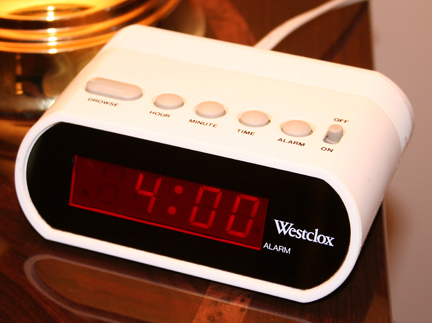 To make this jaunt, however, we had to get up at...are you ready?...4:00 AM in order to meet the tour bus in Christiansburg at 5:30 AM. Then we sat on the bus through several additional stops to pick up more tourists, and onward to Lynchburg via secondary roads (US 29) not the Interstate. That "link" to the railway took us 2-1/2 hours. Only at that point did the actual train journey begin. We boarded the train at 9:55 AM and were at Union Station in DC at 1:30 PM: in all, it was an eight hour run, not including the time to get up and drive the 10 miles to Christiansburg.
To make this jaunt, however, we had to get up at...are you ready?...4:00 AM in order to meet the tour bus in Christiansburg at 5:30 AM. Then we sat on the bus through several additional stops to pick up more tourists, and onward to Lynchburg via secondary roads (US 29) not the Interstate. That "link" to the railway took us 2-1/2 hours. Only at that point did the actual train journey begin. We boarded the train at 9:55 AM and were at Union Station in DC at 1:30 PM: in all, it was an eight hour run, not including the time to get up and drive the 10 miles to Christiansburg.
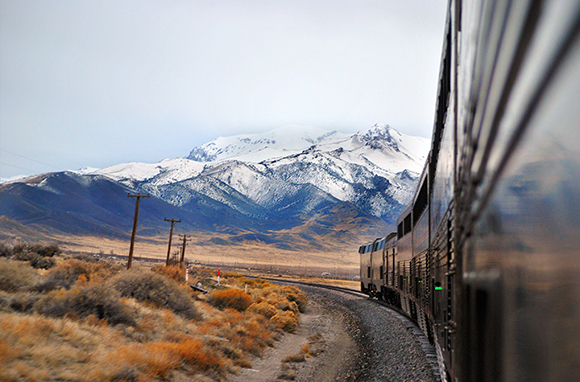 Now, ardent advocates of rail travel (who obviously don't travel by rail much, at least not in the east) tout the "scenic" aspects of it. We're always shown pictures of Amtrak trains gliding through the snow-capped Rockies and alongside scenic rivers. If you like trackside vegetation, I suppose the run between Lynchburg and DC is scenic, because that's all you see from the train windows. Of that vegetation, 90% is kudzu vines and the rest seems to be ailanthus or sumac. Occasionally you catch a glimpse of a clapboard house, the kind owned by people who buy a house right next to a railroad trackbed because they can't afford one that isn't. On the rare occasions when the brush thins out a bit you're rewarded with picturesque vistas of industrial facilities and the odd disabled automobile in someone's front yard.
Now, ardent advocates of rail travel (who obviously don't travel by rail much, at least not in the east) tout the "scenic" aspects of it. We're always shown pictures of Amtrak trains gliding through the snow-capped Rockies and alongside scenic rivers. If you like trackside vegetation, I suppose the run between Lynchburg and DC is scenic, because that's all you see from the train windows. Of that vegetation, 90% is kudzu vines and the rest seems to be ailanthus or sumac. Occasionally you catch a glimpse of a clapboard house, the kind owned by people who buy a house right next to a railroad trackbed because they can't afford one that isn't. On the rare occasions when the brush thins out a bit you're rewarded with picturesque vistas of industrial facilities and the odd disabled automobile in someone's front yard.
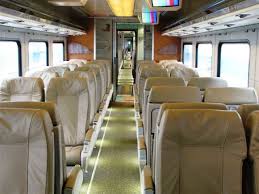 The Amtrak cars of today are far more comfortable than they were in the early 70's, when the line was running a mix of old rolling stock from the pre-existing companies. The cars were clean, again an improvement over 40-odd years ago, when they were old, clapped out, well-worn hand-me-downs.
The Amtrak cars of today are far more comfortable than they were in the early 70's, when the line was running a mix of old rolling stock from the pre-existing companies. The cars were clean, again an improvement over 40-odd years ago, when they were old, clapped out, well-worn hand-me-downs.
Even in our day coach, the seats were vastly better than any airline seats of recent memory, so I'll give Amtrak points for that. There were toilets in each car, except the two in ours bore signs that read "Not to be unlocked until the train reaches New York," but there was one that worked the next car up, although the door didn't lock. There was a "cafe" car, in which you could spend incredible amounts of money for junk food ($2.25 for small bag of potato chips!). The trains run on rail bed that's mostly used by freight haulers so the cars swayed and bounced and jolted a bit, though not too badly.
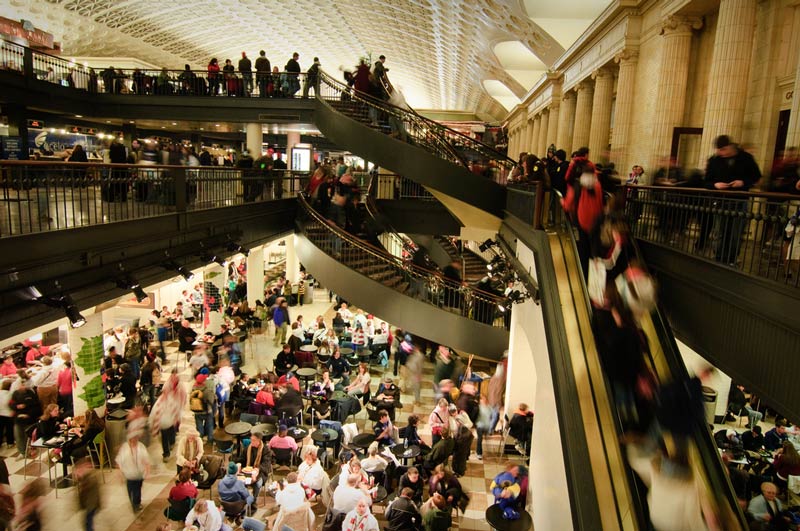
Thundering through the kudzu at the heart-stopping pace of 35 miles per hour, by the time we reached DC we had spent 8-1/2 hours on a trip that would have taken 4-1/2 at most had we gone in our own car. We had had nothing to eat beyond that bag of chips, and we were dumped willy-nilly into the madhouse of Union Station's "food court," where prices were equally ridiculous. There we ate in "Johnny Rocket's," one of those places tricked out to look like an old-time eatery from the 40's and 50's: pictures of Elvis, WW 2 recruiting posters, chrome and Formica tables, and unbelievably loud music of the era. It was so loud we had to shout to hear each other speak. A hot dog, a BLT and two iced teas cost us $25.
Meanwhile the bus on which we'd come to Lynchburg met us at Union Station, which makes me wonder why we didn't just stay on the bus all the way, but of course the whole point was to experience the unique and exciting TRAIN TRIP of which we had heard so much. OK, that was over, time to see the sights.
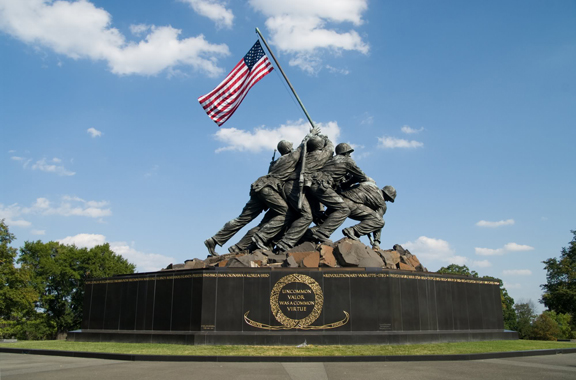 For the rest of the afternoon we lumbered around DC in the bus, stopping at several monuments. We had seen some of these when we lived in the District, but others had been built since we were there. Today DC is seemingly being completely overhauled: there were construction sites everywhere we went, and what wasn't being built new was being renovated, with gigantic tarps covering the buildings and cranes everywhere you looked. Combined with the awesome traffic he had to deal with, I tip my hat to our driver, who was a genius at picking his way through the maze in an enormous coach.
For the rest of the afternoon we lumbered around DC in the bus, stopping at several monuments. We had seen some of these when we lived in the District, but others had been built since we were there. Today DC is seemingly being completely overhauled: there were construction sites everywhere we went, and what wasn't being built new was being renovated, with gigantic tarps covering the buildings and cranes everywhere you looked. Combined with the awesome traffic he had to deal with, I tip my hat to our driver, who was a genius at picking his way through the maze in an enormous coach.
We stopped at most of the "traditional" monuments, and also at the newer ones, including the WW 2 Memorial, the Martin Luther King Memorial, and the Korean War Memorial, which we hadn't seen before. Most of these were "drive-by and take a picture" stops but we did get out to walk up the steps of the Lincoln Memorial, shoving aside the hordes of other tourists to do so. At one point we cruised past the Iwo Jima statue which our tour guide called the "EE-O Jeema" statue and which, he laconically informed us, was "...the war memorial of the US Marine Corpse."
By the end of this day were were played out and ready for the hotel, but first: we had to eat. Sort of. Our luck held: we had the chance to go to another "food court," in a shopping mall in Alexandria, VA, before hitting the hotel.
Having had fast food on the way up my wife and I opted for a chi-chi restaurant near the entrance to the mall, which was overpriced but whose food was a damned sight better than that available in the "food court." Two bowls of soup and two small salads cost us $57 not including a tip.
 When arranging the trip we'd not been told the name of the hotel at which we would stay. Naively, we had assumed that on a "DC" trip it would be one of the places actually in the District or at least close to a suburban Metro stop. But it transpired that the "DC hotel" wasn't actually in DC: it was the Colony South Hotel in Clinton MD, which is close to Andrews AFB (where I was stationed for 3 years).
When arranging the trip we'd not been told the name of the hotel at which we would stay. Naively, we had assumed that on a "DC" trip it would be one of the places actually in the District or at least close to a suburban Metro stop. But it transpired that the "DC hotel" wasn't actually in DC: it was the Colony South Hotel in Clinton MD, which is close to Andrews AFB (where I was stationed for 3 years).
While it wasn't exactly a dump, it wasn't much of a hotel. The room was adequate (though it reeked of carpet cleaner), the breakfast was marginal (nevertheless I've had much worse) but the location in a somewhat seedy neighborhood of Prince Georges County (the only kind PG County seems to have, to be honest) left us without any incentive to go exploring for a place to eat, even had we been able to do so.
If we'd actually stayed in DC rather than 25 miles away we might have been able to take the Metro to a real restaurant but it was not to be. A few weeks before we'd stayed at a very nice Marriott Residence Inn in NOVA that cost the same as the Colony South and was within walking distance of a Metro stop. Nevertheless, I was so exhausted by the time we arrived I didn't even notice the massive thunderstorm that broke after we got there. Nor the raucous parties that were apparently going on in the other rooms.
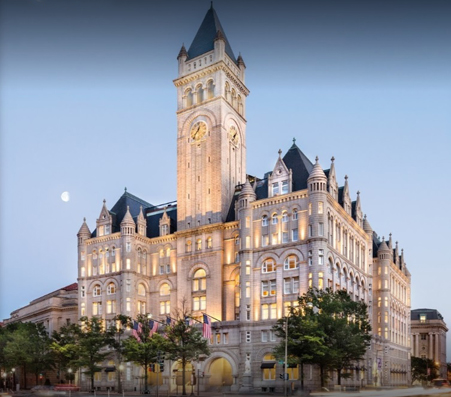 The second day (Sunday) we hit the bus again for a trip to more sights. These included a brief stop at the Trump International Hotel to (literally) peek inside the lobby. In our day that building was "The Old Post Office" but it has now been transformed into a colossally glitzy $1000-a-night venue.
The second day (Sunday) we hit the bus again for a trip to more sights. These included a brief stop at the Trump International Hotel to (literally) peek inside the lobby. In our day that building was "The Old Post Office" but it has now been transformed into a colossally glitzy $1000-a-night venue.
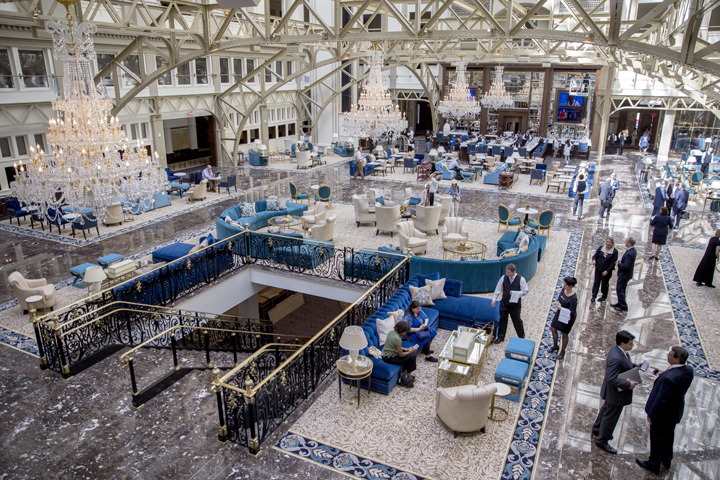 We yokels from southwest Virginia were graciously permitted to step inside and ooooh and aaaah at the opulence of the lobby, provided we went in groups of four at a time; and hurry up, no shilly-shallying, get out and let the next gaggle of peasants come and gape; thanks very much, now go home to your tar paper shacks, and good riddance to ye.
We yokels from southwest Virginia were graciously permitted to step inside and ooooh and aaaah at the opulence of the lobby, provided we went in groups of four at a time; and hurry up, no shilly-shallying, get out and let the next gaggle of peasants come and gape; thanks very much, now go home to your tar paper shacks, and good riddance to ye.
Then we had a couple of hours to "visit the Smithsonian Museum of your choice," which in our case was the Natural History Museum on the Mall. There we saw some interesting exhibits, and ate some soup in the cafeteria, before we boarded the bus to go on a Potomac River cruise out of Georgetown.
I was at Georgetown University from 1974-80, and during my years at Andrews AFB occasionally went to the Potomac to fish. I was stunned at the transformation of the Georgetown waterfront that has taken place.
In my time the area under the Whitehurst Freeway was industrial in nature. There was a rail spur for coal cars delivering fuel to the DC power plant and some warehouses along K Street. All of what I remembered has been totally obliterated by new buildings. The rip-rap lining the river bank and the iconic Thompson's Boat House (in which Georgetown kept its racing shells) are long gone, replaced by a development called "Washington Harbour" (note the spelling), a retail complex with some very snazzy restaurants that are expensive even by Washington standards, plus some places where excursion boats come in and go out.
We rode from Washington Harbour to Alexandria Harbour (note the spelling), a trip of about 45 minutes on a sparklingly beautiful day, watching the kayakers and stand-up-paddle-board riders do their thing. Upon arrival at Alexandria we were again met by the bus, which then commenced the trip back. That was a matter of another 8 hours back down Route 29. If we had decided to fly from DC to London it would have taken the same amount of time, but the bus seats were much more comfortable than airliner seats, anyway. So there!
Along the way, we stopped in Charlottesville for...more fast food. We had our choice of "Crane's Chicken Tenders," "Popeye's Fried Chicken," and "Kentucky Fried Chicken," and there was a "Cold Stone Creamery" ice cream store as well. The guide was somewhat apologetic about this situation: he said that the "Woodfired Grill" fast food joint had refused to take a busload on Sunday and this trio of chicken-eers was the only other option. Not counting our Smithsonian cafe stop, that was the third fast food "meal" we were offered. A couple of people on the bus who had been delighted to find that the first two "food courts" included a MacDonald's, were somewhat irritated that the venue in Charlottesville didn't. We finally arrived back in Christiansburg (10 miles from our house) at 9:30 PM. The total breakdown of the 40 hour trip was: time in transit, 16 hours not including stops for "meals" or plowing through DC traffic. At the hotel, 10 hours. Actually seeing and doing things, 14 hours.
When you spend that much time on a bus with strangers you get to notice a few things that make them stand out as individuals. The two ladies in the seats behind us spent the trips up and  down discussing religion and Jesus, pointing out to each other what God wanted and didn't want. I was intrigued to learn that "God doesn't want war, and God doesn't want disease," but nevertheless we have these things. One would think that God would put a stop to them, if He didn't want them, no?
At the front of the bus was a woman who laughed constantly at something, and whose laugh sounded like Hillary Clinton channeling Woody Woodpecker. I was happy she was 10 rows away from me. I imagine the driver was suffering greatly.
down discussing religion and Jesus, pointing out to each other what God wanted and didn't want. I was intrigued to learn that "God doesn't want war, and God doesn't want disease," but nevertheless we have these things. One would think that God would put a stop to them, if He didn't want them, no?
At the front of the bus was a woman who laughed constantly at something, and whose laugh sounded like Hillary Clinton channeling Woody Woodpecker. I was happy she was 10 rows away from me. I imagine the driver was suffering greatly.
So the conclusion we drew from this experiment is that rail travel to/from DC is not optimal even now that the train stops in Roanoke, and it would be an even less enjoyable experience even if (by Divine Intervention) passenger train service was restored to Blacksburg itself. (I must point out that predictably, towns and cities along the route who currently don't have train service started calmoring for it as soon as the station in Roanoke opened. It's only a matter of time before somoene starts agitating to build a rail spur from Blacksburg.) It made no sense to me to spend that much effort and money to do something that could have been done in half the time by car, at less cost, even allowing for parking and hotel fees. Add to the mix the astonishingly bad options for "food" and the boredom and fatigue of a long rail journey, and I know what my choice will be next time.
The European model of train service simply isn't an appropriate concept to apply to the USA. In most places in Europe if you go 200 miles in straight line, you're in a different country; major cities are perhaps 50-75 miles apart. In the US, the suburbs of a major city like NY can extend that far, and once you get west of the Eastern seaboard, cities are more likely to be 300-500 miles from each other (consider the distance from, say, Philadelphia to Pittsburgh, let alone Los Angeles to Albuquerque). Even on the east coast distances are comparatively long: from DC to NY is 275 miles and NY to Boston another 250+. DC to Boston would be at least 10 hours by rail. From Lynchburg to Boston would be an overnighter, more or less. Having spent a couple of nights in a day coach seat (when I was much younger and more adaptable) that's not an experience I'd relish having again.
Furthermore, the European trains so beloved of the people who push passenger rail are very, very heavily subsidized by tax money: so is Amtrak, of course, but we get little to no return on the "investment" of a billion and a half dollars a year because their service is so inconvenient and arduous that nobody wants to use it. The Interstate highway system is a far more convenient, efficient and cost-effective use of tax money—and it's paid for by those who actually use it through gasoline taxes, not by the general public as it is in Europe.
People who willingly ride long distance trains in this country must be either diehard railroad fans, people who are afraid to fly, or non-drivers whose only alternative—a Greyhound Bus, God help us—is even worse than Amtrak. Nor are the trains cheap: an Amtrak ticket is usually comparable in price to an air fare in most cases. We have been dumping taxes into the Amtrak money pit for 40-odd years: at this point the US taxpayers have squandered nearly three-quarters of a trillion dollars and we haven't found the bottom yet. Amtrak will never, ever, pay its own way.
Railroads are tremendously cost efficient for hauling freight, but as a way to carry passengers they're a dead end. There's a reason why we have fast, efficient, superhighways. When I was born in the late 1940's there were no Interstates and only rudimentary air service: people had no real choice for long distance travel but railroads. Today things are different and better: passenger rail is an idea whose time is over. The Interstate highways didn't kill off passenger rail: the inconvenience and inefficiency of passenger rail travel created the need for Interstate highways to begin with. Wasting endless amounts of money trying to revive a 19th Century transportation modality simply reinforces the necessity for superhighways.
Passenger rail travel in the 21st Century is a fantasy. Or a bad dream: take your pick.
| HUNTING | GUNS | DOGS |
| FISHING & BOATING | TRIP REPORTS | MISCELLANEOUS ESSAYS |
| CONTRIBUTIONS FROM OTHER WRITERS|
| RECIPES |POLITICS |